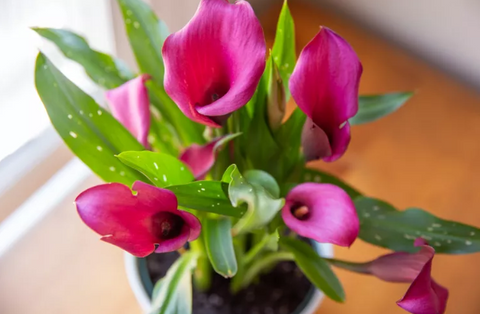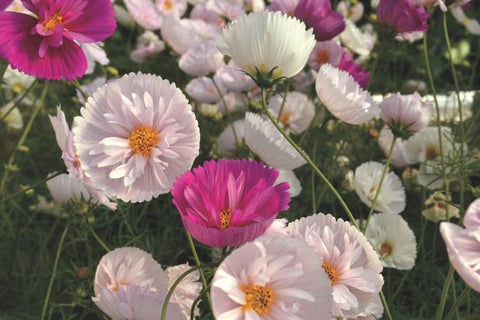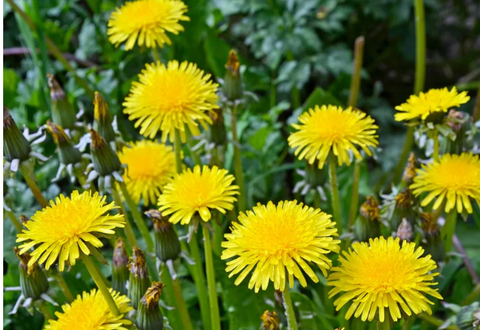Gardening is not just about planting and nurturing; it's also about creating a visually appealing and functional outdoor space. DIY gardening structures offer a creative and rewarding way to enhance your garden's beauty while adding practical elements. Let's explore some fun and easy-to-make gardening structures that can elevate your garden's aesthetic and functionality.

Benefits of DIY Gardening Structures
Gardening enthusiasts often find joy and satisfaction in creating their structures to enhance their outdoor spaces. DIY gardening structures not only add functionality but also bring a touch of creativity and personalization to gardens. Let's delve into the myriad benefits of embracing DIY projects in your garden.
Enhancing Your Garden with Creativity
One of the most exciting aspects of DIY gardening structures is the opportunity to unleash your creativity. From unique trellis designs for climbing plants to whimsical raised beds, DIY projects allow you to infuse your garden with personality and flair, making it a reflection of your style and imagination.
Adding Functionality to Your Outdoor Space
DIY gardening structures go beyond aesthetics; they serve practical purposes that enhance your gardening experience. Whether it's creating vertical trellises to support vine growth or building raised beds for better soil drainage, these structures add functionality that contributes to healthier plants and easier garden maintenance.
Cost-Effectiveness of DIY Projects
One of the standout advantages of DIY gardening structures is their cost-effectiveness. By opting to build your structures instead of purchasing pre-made ones, you can save a significant amount of money. DIY projects allow you to use affordable materials and repurpose items, reducing expenses while still achieving desired results.
Customization and Personalization
DIY projects offer unparalleled customization options, allowing you to tailor designs to perfectly fit your garden's layout and style. Whether you prefer a rustic, eco-friendly vibe or a sleek modern look, DIY gardening structures empower you to express your unique taste and create a space that feels truly yours.
Building Skills and Knowledge
Engaging in DIY gardening projects is a fantastic way to develop valuable skills and expand your knowledge base. From learning construction techniques to understanding garden design principles, each project becomes an opportunity for growth and mastery, enriching your gardening journey along the way.
Creating Sustainable Solutions
DIY gardening structures align with sustainable practices by promoting the use of recycled and upcycled materials. By repurposing items like pallets, old containers, or reclaimed wood, you contribute to reducing waste and minimizing your environmental footprint, creating sustainable yet aesthetically appealing solutions that benefit both your garden and the planet.
Encouraging Outdoor Enjoyment
Creating DIY structures in your garden encourages outdoor enjoyment and relaxation. By providing seating areas, shade options, and functional spaces, you create inviting environments where you can unwind, connect with nature, and savor the beauty of your garden firsthand.
Promoting Physical Activity and Wellbeing
Engaging in DIY gardening projects promotes physical activity and contributes to overall well-being. The hands-on nature of building structures, tending to plants, and maintaining garden spaces offers exercise, fresh air, and a sense of accomplishment, fostering a healthy lifestyle.
Long-Term Benefits and Savings
Investing time and effort in DIY gardening structures yields long-term benefits and savings. Well-built structures require minimal maintenance over time, reducing ongoing costs. Durable materials and thoughtful design choices ensure longevity, providing lasting enjoyment and value for years to come.

Building a Strong Foundation
Choosing the Right Location
Before embarking on any DIY gardening project, consider the location carefully. Take note of sunlight exposure throughout the day and the soil conditions in the area. Different plants and structures thrive under varying light and soil conditions, so choose a spot that suits your intended purpose.
Preparing the Ground for Construction
Once you've chosen the location, prepare the ground by clearing any debris, weeds, or rocks. Level the area if necessary to ensure a stable foundation for your gardening structure. Proper preparation sets the stage for a successful and long-lasting project.
Simple DIY Trellises
Materials Needed for a Basic Trellis
For a basic trellis, you'll need wooden stakes or posts, sturdy wire or twine, and optional decorative elements like beads or paint. These materials are affordable and readily available at hardware stores or garden centers.
Constructing a Trellis for Climbing Plants
Assemble the wooden stakes or posts in a vertical or horizontal pattern, depending on the design you prefer. Secure the wire or twine between the stakes, leaving enough space for climbing plants to grow. Add decorative elements if desired to personalize your trellis.
Decorative Options for Aesthetic Appeal
To enhance the aesthetic appeal of your trellis, consider painting it in vibrant colors or adding decorative beads or ornaments. Choose colors and embellishments that complement your garden's overall theme and style.
Vertical Garden Structures
Benefits of Vertical Gardening
Vertical gardening maximizes space by growing plants upward, which is ideal for small or limited outdoor areas. It also creates a visually striking display and allows for better air circulation and sunlight exposure for plants.
Building Vertical Garden Walls
Construct vertical garden walls using sturdy materials such as pallets, trellises, or wire mesh panels. Attach planters or containers to the wall, filling them with soil and your choice of plants. Vertical garden walls are versatile and can be customized to suit different plant varieties and design preferences.
Using Pallets for Vertical Gardens
Repurpose wooden pallets into vertical garden structures by attaching plant containers to the slats. Pallets provide a rustic and eco-friendly backdrop for plants, making them a popular choice for DIY vertical gardens.
Hanging Planters and Baskets
Create hanging gardens using recycled materials such as old containers, baskets, or even shoes. Hang these planters from sturdy hooks or beams, ensuring they are securely fastened to support the weight of the plants and soil.
Choosing Plants Suitable for Hanging
Select plants that thrive in hanging conditions, such as trailing vines, ferns, and succulents. Consider factors like light requirements, watering needs, and growth habits when choosing plants for your hanging gardens.

Arbors and Archways
Adding Charm with Garden Arbors
Garden arbors add a touch of romance and elegance to outdoor spaces. Construct arbors using wooden or metal arches, embellished with climbing vines or flowers for a fairy-tale ambiance.
Constructing an Arbor from Scratch
To build an arbor from scratch, use durable materials such as pressure-treated wood or weather-resistant metal. Follow a plan or design that suits your garden's style and dimensions, ensuring structural integrity and stability.
Growing Vines and Flowers on Arbors
Encourage climbing plants like roses, clematis, or jasmine to grow on your arbor, creating a natural canopy of blooms. Regular pruning and training help maintain plant health and shape, enhancing the beauty of the arbor over time.
Raised Garden Beds
Advantages of Raised Garden Beds
Raised garden beds provide various advantages, including greater soil drainage, better insect and pest control, and easier planting and maintenance access. They also provide a defined space for gardening, ideal for growing vegetables, herbs, or flowers.
Building Raised Beds with Wood or Stone
Construct raised beds using treated lumber, cedar, or stone blocks for durability and longevity. Choose a height that suits your gardening needs, ensuring sufficient soil depth for plant roots to thrive.
Filling Raised Beds with Quality Soil Mix
Fill raised beds with a balanced soil mix that promotes healthy plant growth and moisture retention. Incorporate organic matter like compost or aged manure to enrich the soil and provide essential nutrients for plants.
Herb Spirals and Plant Towers
Designing Herb Spirals for Compact Gardens
Herb spirals are space-efficient gardening structures that combine vertical and horizontal planting zones. Construct spirals using bricks or rocks, arranging them in a spiral pattern to create different microclimates for herbs with varying sun and water needs.
Building Plant Towers for Space Efficiency
Plant towers are vertical structures that accommodate multiple plants in a small footprint. Create towers using stacked pots or containers, filling each tier with soil and planting herbs, flowers, or vegetables. Plant towers maximize growing space while adding visual interest to your garden.
Water Features in the Garden
Installing DIY Water Features
DIY water features such as mini ponds, fountains, or cascading waterfalls enhance the tranquility and beauty of your garden. Install water features in strategic locations to create focal points and attract wildlife.
Creating Mini Ponds and Waterfalls
Dig a shallow pit for a mini pond, lining it with a flexible pond liner or preformed shell. Add water plants, rocks, and a small pump for circulation to create a serene aquatic habitat. For waterfalls, stack rocks or use a pre-made waterfall kit to create cascading water effects.

Seating and Relaxation Areas
Building Benches and Seating Nooks
Incorporate seating areas into your garden design for relaxation and enjoyment of the outdoors. Build benches using weather-resistant materials like cedar or teak, placing them strategically to offer views of garden features.
Adding Comfort with Outdoor Cushions
Enhance the comfort of outdoor seating with weatherproof cushions or pillows. Choose fabrics that resist fading and moisture, providing a cozy and inviting atmosphere for relaxation.
Decorative Pathways and Borders
Laying Pathways with Gravel or Pavers
Define garden pathways using gravel, pavers, or stepping stones. Create meandering paths that guide visitors through the garden, adding visual interest and structure to the landscape.
Creating Edging with Stones or Bricks
Outline garden beds and pathways with edging materials such as stones, bricks, or decorative borders. Edging enhances the neatness of garden areas, prevents soil erosion, and adds a finishing touch to landscaping.
DIY Greenhouses and Cold Frames
Constructing Small Greenhouses for Seedlings
Small greenhouses or cold frames extend the growing season and protect tender plants from harsh weather conditions. Build a simple greenhouse using PVC pipes or wooden frames covered with clear plastic or greenhouse film. Ensure proper ventilation and temperature control inside the greenhouse to promote healthy plant growth.
Building Cold Frames for Season Extension
Cold frames are low-cost alternatives to traditional greenhouses, providing a protected environment for plants during colder months. Construct cold frames using recycled windows, wooden frames, or hay bales covered with plastic or glass. Position cold frames in sunny areas and insulate them during freezing temperatures for optimal plant protection.

Maintenance Tips for Longevity
Regular Inspection and Repairs
Regularly inspect gardening structures for wear and tear, loose components, or damage caused by weather or pests. Perform necessary repairs promptly to prevent further deterioration and ensure the longevity of your DIY structures.
Preserving Wood with Sealants
If your gardening structures involve wooden components, protect them from moisture and decay by applying wood sealants or stains. Sealants help preserve wood integrity and enhance durability, extending the lifespan of your DIY creations.
Adding Personal Touches
Decorating Structures with Paint or Stain
Add personality and style to your DIY gardening structures by painting or staining them in vibrant colors or natural finishes. Choose paint or stain products designed for outdoor use to withstand weather exposure and enhance visual appeal.
Incorporating Arts and Crafts into Designs
Infuse creativity into your gardening structures by incorporating art and crafts elements. Add mosaic tiles, hand-painted designs, or sculptural elements to personalize your structures and make them unique expressions of your creativity.
Creating fun and easy-to-make gardening structures adds depth, functionality, and aesthetic value to your outdoor space. From trellises for climbing plants to seating areas for relaxation, each DIY project contributes to a vibrant and enjoyable garden experience. Embrace creativity, explore innovative designs, and savor the rewards of a well-crafted garden that reflects your style and passion for gardening.









